Prescription drug abuse is a prevalent problem in the United States. Among Americans, only alcohol and marijuana are abused more frequently than prescription drugs.
Understanding Prescription Drugs
Learn about prescription drugs and substance abuse
The most commonly abused prescription drugs can be divided into three distinct categories:
- Opioids – including OxyContin (oxycodone), Vicodin (hydrocodone), and Dilaudid (hydromorphone)
- Central nervous system depressants (CNS) –including Valium (diazepam) and Xanax (alprazolam)
- Stimulants – including Adderall (amphetamine) and Ritalin (methylphenidate)
Medications containing opioids are most often prescribed for their painkilling properties and are commonly abused for their euphoric effect. CNS depressants are usually prescribed to treat anxiety and some sleep disorders and are abused for their calming effect. Stimulants have become popular medications for the treatment of attention-deficit/hyperactivity disorder (ADHD) and are often abused for their ability to increase focus and concentration.
Though prescription medications have a wide range of uses and are abused for a variety of reasons, certain commonalities exist. Most of these drugs are relatively easy to acquire, and the fact that they are commonly used for legitimate medical purposes leads some people to the mistaken conclusion that they are not dangerous.
Also, there is far less social stigma attached to using prescription medications than there is with certain other drugs. For example, using OxyContin (which contains an opioid) is far more acceptable in most social circles than is using heroin (which is also an opioid).
Ease of access, familiarity, perceived lack of danger, and social acceptance have all conspired to make prescription drug abuse a growing threat to the health and well-being of millions of Americans. By seeking treatment, the risks and detriments of prescription drug abuse can be avoided.
Statistics
Prescription drug addiction statistics
Experts estimate that in the United States alone, more than 52 million individuals over the age of 12 have abused a prescription drug at least once, with about 8.76 million people having engaged in prescription drug abuse in the past year.
Among past-year prescription drug abusers, more than 5 million people abused opioid painkillers. CNS depressants were the second-most commonly abused prescription drugs, with about 2.2 million individuals using them for non-medical purposes. Stimulants were abused by an estimated 1 million Americans in the past year.
As evidence of the dangers of prescription drug abuse, the U.S. Centers for Disease Control and Prevention (CDC) reports that prescription opioid overdose is responsible for an average of 44 deaths every day in the United States. In 2013 (the most recent year for which complete data is available), prescription drug overdose was responsible for 22,767 deaths, which is slightly more than 50% of all drug overdose deaths in the U.S. during that time period.
Prescription drug abuse also accounts for nearly 1.5 million emergency room visits every year.
Causes and Risk Factors
Causes and risk factors for prescription drug addiction
Substance abuse and addiction can be caused by a variety of internal (genetic or biological) and external (environmental or societal) factors. For example, as indicated earlier on this page, the ease of access to prescription medications contributes to their abuse. While no one factor can predict whether or not a person will abuse or become addicted to prescription medications, the following are among the more common genetic and environmental influences, as well as general risk factors:
Genetic: Years of research has established a strong association between family history of substance abuse and similar behaviors in an individual. For example, people who have a first-degree relative (a parent or sibling) who has developed a drug addiction are much more likely to become addicted than a person who has no family history of addiction. Studies involving twins and adopted children strongly suggest that susceptibility to substance abuse and addiction is a genetic/inherited trait.
Environmental: Of course, having family members who openly abuse prescription medications or other drugs can also be an environmental factor. Children who grow up in houses where parents or older siblings commonly use prescription drugs for recreational or self-medicating purposes are likely to believe that this behavior is both common and acceptable. Other environmental influences on the development of a prescription drug problem include having close friends who abuse prescription drugs, living in a neighborhood where such drugs are easily accessible, and being pressured into substance abuse.
Risk Factors:
- Age (prescription drug abuse is most common among older teens and younger adults)
- Suffering from chronic or acute pain (which may be treated with prescription medication)
- Suffering from ADHD or anxiety (which is often treated with commonly abused prescription medications)
- Ease of access to prescription medications (via friends, family members, or familiarity with illicit online sources)
- Family history of substance abuse
- Family history of mental illness
- Prior substance abuse
- Personal history of other mental illness(es)
- Geography and socioeconomic status (prescription drug abuse is more common in low-income rural communities)
Signs and Symptoms
Signs and symptoms of prescription drug addiction
The category of prescription drugs covers several types of substances with a wide range of medical purposes and side effects. Thus, no one sign or set of signs will definitively indicate that a person is abusing a prescription medication. That said, the following are among the more common signs that a person may be engaging in this behavior:
Behavioral symptoms:
- Stealing or altering actual prescriptions
- Making multiple trips to various doctors with pain-related complaints
- Significant unexplained change in financial status
- Withdrawal from family or friends
- Becoming secretive or otherwise deceptive regarding whereabouts and activities
- Associating with individuals who abuse prescription drugs
- Visiting illicit pharmaceutical websites
Physical symptoms:
- Changes in blood pressure
- Shallow breathing
- Slurred speech
- Insomnia or hypersomnia
- Clumsiness or other signs of impaired coordination
- Significant weight gain or loss
- Excessive perspiration
- Constipation
Cognitive symptoms:
- Trouble focusing or following conversation
- General confusion
- Memory problems
- Temporary state of hyper-focus
Psychosocial symptoms:
- Agitation and irritability
- Angry outbursts
- Loss of interest in activities that were previously of great importance
- Expressions of anxiety or paranoia
- Constant complaints of vague pain or illness
Co-Occurring Disorders
Prescription drug addiction and co-occurring disorders
As is often the case with other forms of substance abuse, the misuse of prescription medications rarely occurs in a vacuum. As discussed earlier on this page, both internal and external factors can influence a person’s decision to engage in prescription drug abuse. In many cases, prescription drug abuse is caused by, or leads to, co-occurring mental health conditions such as the following:
- Anxiety disorders
- Bipolar disorder
- Major depressive disorder
- Persistent depressive disorder
- Attention-deficit/hyperactivity disorder (ADHD)
- Posttraumatic stress disorder (PTSD)
Effects
Effects of prescription drug addiction
Left untreated, prescription drug abuse can quickly morph from a recreational pursuit or self-medication endeavor into a dangerous addiction. Depending upon the specific drug being abused and the nature and severity of that abuse, short- and long-term effects of prescription drug abuse can include the following:
- Irreversible organ damage
- Brain damage
- Cardiovascular distress
- Increasingly severe anxiety, paranoia, and/or depression
- Legal problems
- Financial ruin
- Failed relationships
- Poor job performance, which can lead to loss of employment
Withdrawl & Overdose
Effects of prescription drug withdrawal and overdose
Effects of prescription drug withdrawal: One of the reasons that prescription drug abuse can be difficult to stop is that using many of these substances quickly leads to tolerance (requiring increasingly larger or more potent doses) and dependence (meaning that the body may experience painful symptoms when denied access to the drug being abused).
Depending upon the drug being abused, withdrawal symptoms can range from mild to severe, and may be dangerous. The following are among the more common symptoms that are associated with prescription drug withdrawal:
- Low energy
- Irritability and agitation
- Runny nose
- Watery eyes
- Excessive perspiration (both hot flashes and cold sweats)
- Nausea
- Vomiting
- Diarrhea
- Severe abdominal cramping
- Muscle pain
- Strong drug cravings
- Insomnia
- Nightmares
- Delusions
Effects of prescription drug overdose: Overdose occurs when a person’s drug use exceeds the body’s ability to safely metabolize the substances. Prescription drug overdose can be deadly. The following effects of prescription drug overdose demand immediate medical attention:
- Profoundly shallow breathing
- Extremely rapid breathing
- Disrupted pulse (either too slow or very fast)
- Hallucinations
- Seizure
- Heart attack
- Stroke
- Loss of consciousness
- Coma



